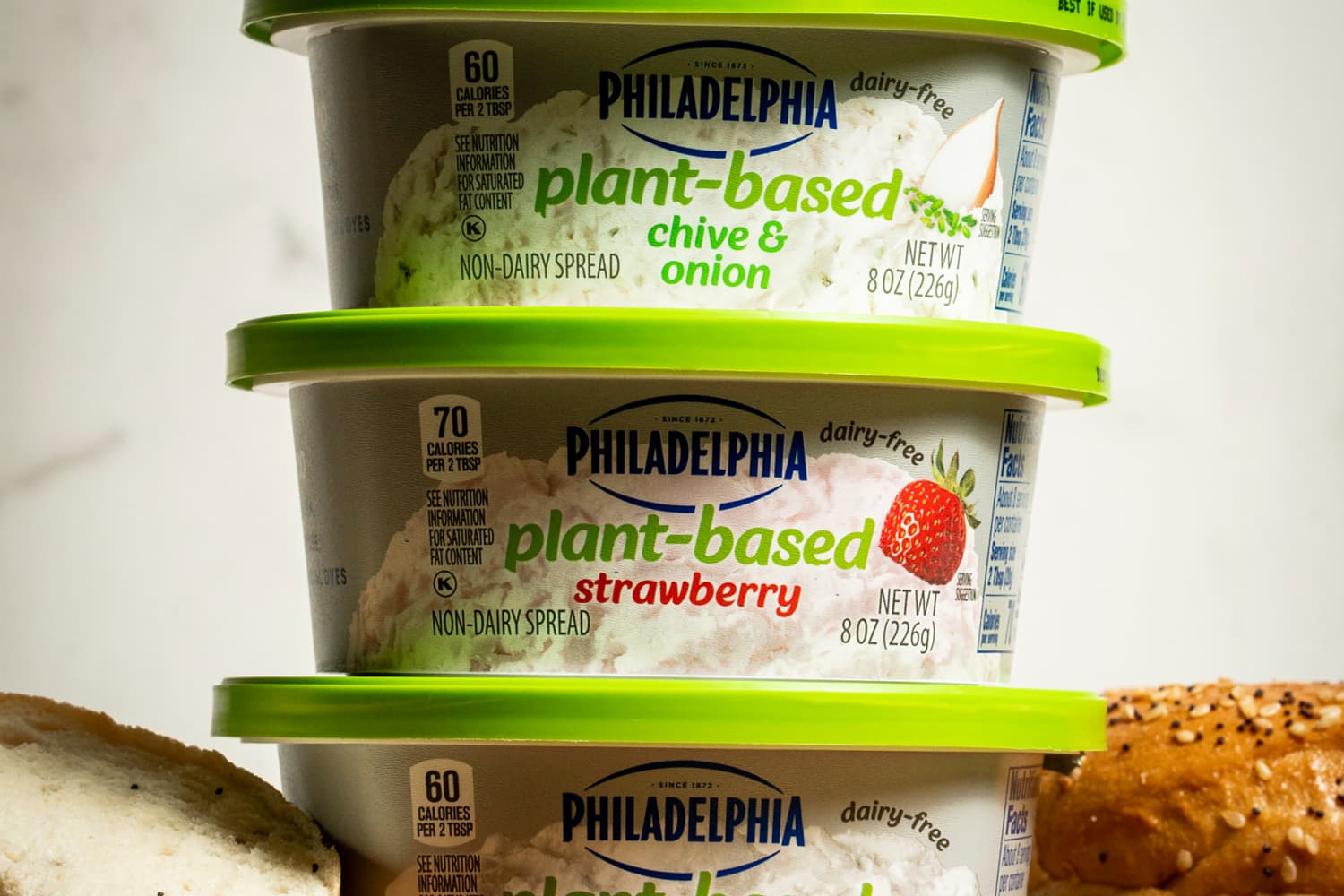We independently select these products—if you buy from one of our links, we may earn a commission. All prices were accurate at the time of publishing.
When the topic of cream cheese is brought up, the first brand that usually comes to mind is Philadelphia. The reason isn’t just because they make an excellent spread — which they do — it’s also because Philadelphia was the first company to bring cream cheese to market. Created by accident while attempting to make Neufchâtel (a soft and crumbly French cheese), the origins of this dairy product date all the way back to the late 1800s. As legend has it, an American cheesemaker accidentally added too much cream to Neufchâtel, which led to the happy discovery of its easier-to-spread cousin.
At the time, Philadelphia, PA was a city known for its dairy products as well as its booming food scene. So in order to appeal to the masses, the newly discovered cheese spread was branded as Philadelphia, and cream cheese as we know it was born.
With the current growing interest in plant-based diets, it’s exciting to see brands like Philadelphia step outside of their comfort zone to appeal to a wider range of consumers. Offering plant-based alternatives to its tried-and-tested line of products is a big move, not only for them, but for consumers as well.
While a company can claim all they like that you can’t tell the difference between the two products, I’d like to refer them back to the era of “I Can’t Believe It’s Not Butter!” When I had the opportunity to do a head-to-head comparison of the new Philadelphia Plant-Based Non-Dairy Spread and the Original Cream Cheese Spread, I jumped at the chance to taste the difference. And if you had any reservations about trying these new products out for yourself, this is your cue to keep reading.
My Honest Opinion of Philadelphia’s Plant-Based Non-Dairy Spread
When I took a look at the ingredients list, pasteurized milk and dairy were nowhere to be found. The labeling on the plant-based container also reads “no gluten, lactose, or artificial dyes.” This, of course, brought up concerns about texture and flavor.
First, I wanted to test the spread’s so-called scoopability and texture. I grabbed two butter knives, using one to scoop the plant-based spread, and another for the original. Laying them side by side, I could see one major difference. The Original had a much smoother texture and did not clump up like the plant-based option did. I was able to get a decent-sized scoop on the first try with both options, but texture was the obvious difference.
Moving on to spreadability, this is where the two were much more similar. I let both spreads sit out at room temperature for about an hour before testing, mostly to ensure I’d have no issues with this step. Upon spreading the plant-based option on my mini bagel slices, I was impressed with how smoothly it went on. No matter how clumpy it might seem upon first scoop, once you start spreading it out, it becomes very similar to its dairy-filled counterpart.
I saved the best part for last: The taste test. By this point, I was already blown away by how similar the two spreads are. Upon first bite, had I been blindfolded, I might not have been able to tell the difference. Truly! The two versions are both fantastic in and of themselves. While there are subtle differences between them, it’s not enough to get in the way of enjoying the experience.
All in all, I was surprised by how much I enjoyed the new plant-based options from Philadelphia. I was even lucky enough to sample the brand’s flavored plant-based spreads, Strawberry and Chive & Onion, which were so delicious I quickly forgot they weren’t real cream cheese. If you’re curious about going plant-based, need to avoid dairy, or just want more options, I encourage you to give these new spreads a try.

